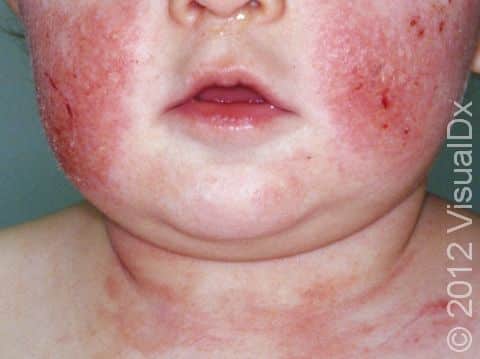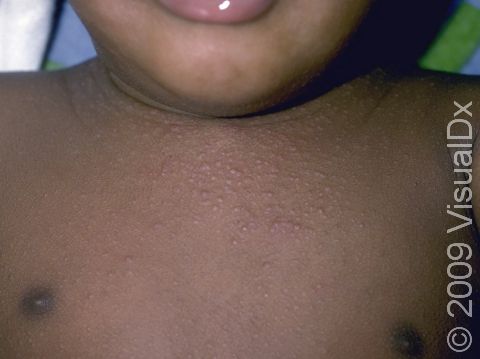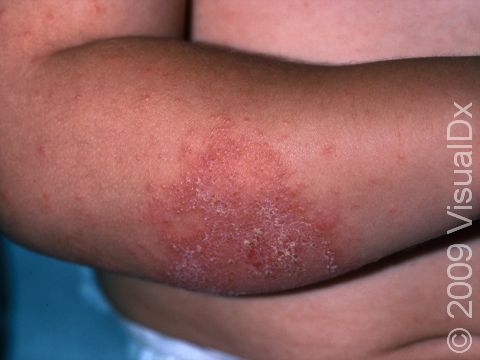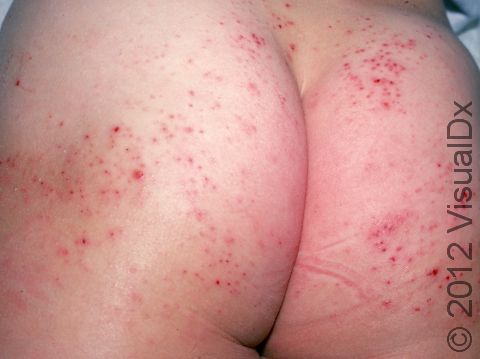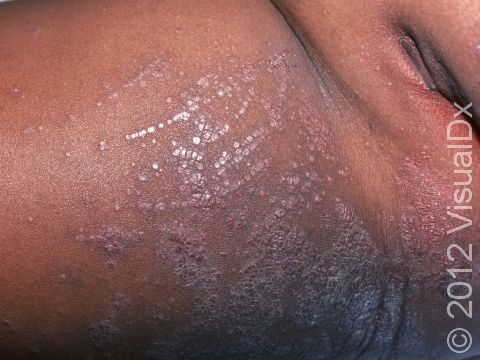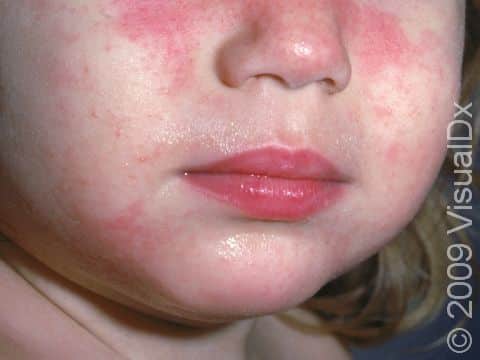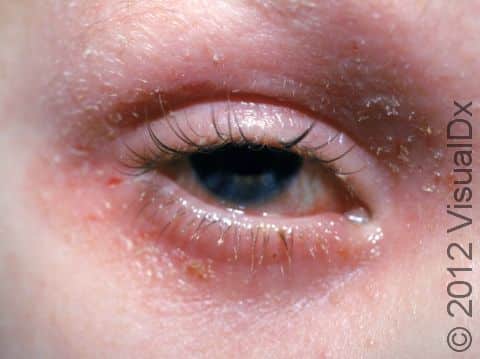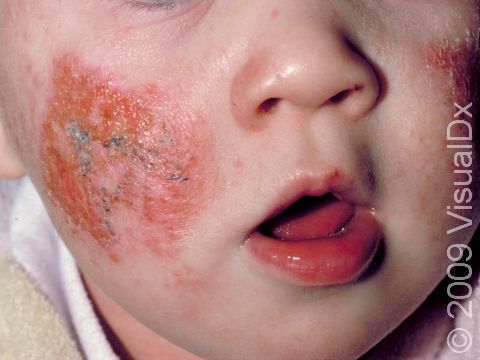Eczema (Atopic Dermatitis)
Eczema (atopic dermatitis) is a common disorder in infants causing dry and itchy patches of skin. Infants may scratch at the dry skin, causing bleeding in the affected areas and sleep disruption. Eczema can occur on any part of the body. In infants, it is seen on the cheeks and on skin that is stretched often (eg, the back of elbows and front of knees).
Eczema is not contagious and it is not an infection, but prolonged scratching can allow bacteria to get through the skin and cause an infection. Some common triggers for eczema include:
- Heat and humidity.
- Abrasive clothing.
- Tobacco smoke and chemicals.
- Some soaps and detergents.
Who's At Risk?
Infants are more likely to have eczema if they have other allergies, such as to foods or milk, as well as seasonal allergies, or if they have other family members who were affected by eczema as an infant. Infants who have asthma are also more likely to have eczema.
Signs & Symptoms
The first location affected by eczema in an infant is usually the cheeks. The scalp, elbows and knees, and skin of other parts of the body may be affected as well.
- Thickened, scaly papules (small, raised bumps) and plaques (areas of raised skin that are larger than a thumbnail and feel rough and flaky) are seen in these areas. The condition may be:
- Mild – few, scattered areas of involvement, which are easily treated with self-care measures.
- Moderate – more extensive involvement, which is more difficult to control with self-care measures and may require prescription therapy.
- Severe – diffuse involvement, which is difficult to treat even with prescription therapy.
- In lighter skin colors, affected areas may appear pink or red; in darker skin colors, the redness may be subtle, or affected areas may appear purplish or darker brown.
- Areas of eczema that become infected can develop thick crusts.
Self-Care Guidelines
Maintaining healthy skin is very important for those with eczema.
- Moisturizing skin-care routines are essential.
- Hypoallergenic moisturizing soaps, such as unscented Dove Sensitive Skin Beauty Bar, Vanicream Cleansing Bar, and Nature by Canus, are recommended.
- Thick moisturizers such as petroleum jelly (Vaseline), Aquaphor Healing Ointment, Eucerin Original Healing Cream, CeraVe Healing Ointment, or CeraVe Moisturizing Cream should be applied to damp skin daily after bathing.
- Attempt to minimize exposure to heat, humidity, detergents / soaps, abrasive clothing, chemicals, smoke, and stress.
- Fragrance-free laundry detergent may be beneficial.
- Keep the home from getting too dry by using a humidifier, especially in the bedroom.
Treatments
Topical or oral medications for eczema can include:
- Topical steroid creams or ointments to treat active areas of localized eczema. Lower-strength steroids may be used on the face, and medium-to-high-strength steroids may be used on the body (trunk) and arms or legs (extremities). Care should be taken when using topical steroids in skin folds and on covered (obstructed) skin areas due to the risk of thinning (atrophy) of the skin.
- Oral antihistamines may be prescribed to decrease itching.
- If an infection is suspected, topical or oral antibiotics may be prescribed.
- In patients who have multiple areas of broken skin or a history of bacterial skin infections, dilute bleach baths may be prescribed.
Visit Urgency
See your child’s medical professional for evaluation if you see no improvement with self-care measures or the eczema gets worse. Also seek medical care if you see areas of pus or large numbers of crusty areas (scabs), as this might be caused by infection with bacteria.
Trusted Links
References
Bolognia J, Schaffer JV, Cerroni L. Dermatology. 4th ed. Philadelphia, PA: Elsevier; 2018.
James WD, Elston D, Treat JR, Rosenbach MA. Andrew’s Diseases of the Skin. 13th ed. Philadelphia, PA: Elsevier; 2019.
Kang S, Amagai M, Bruckner AL, et al. Fitzpatrick’s Dermatology. 9th ed. New York, NY: McGraw-Hill Education; 2019.
Paller A, Mancini A. Paller and Mancini: Hurwitz Clinical Pediatric Dermatology. 6th ed. St. Louis, MO: Elsevier; 2022.
Last modified on February 28th, 2023 at 8:24 pm

Not sure what to look for?
Try our new Rash and Skin Condition Finder
